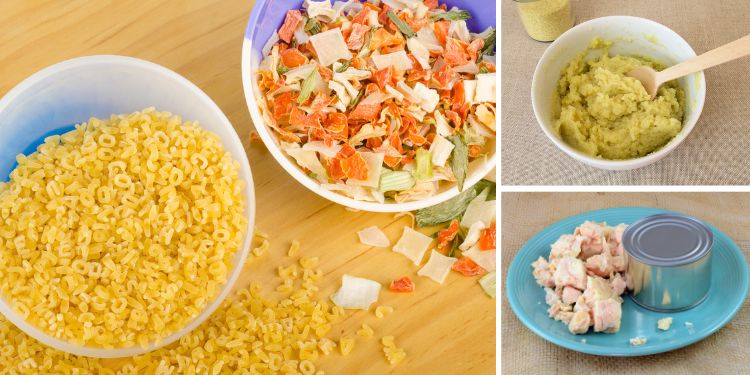Instant foods that are quick to prepare, and calorically dense make up the bulk of many preppers food stores.
Regardless of if you have a mountain of MREs and canned beans or your prepper pantry is nearly empty, a stockpile of versatile instant foods will always give you a leg up.
Yet these instant foods are the sort of thing that the average Joe will also rush to stockpile anytime a potential disaster looms on the horizon.
The good news is that a lot of the best instant foods have long shelf-lives, and you can still use them in the kitchen as they age to keep a constant rotation. This includes many of the following.
Dehydrated Soups

Shelf Life: Up to 5 years
Calories Per Serving: 135 to 150
Dehydrated freeze-dried soups are one of the best instant foods you can stockpile to be prepared for an emergency. The trick to using dehydrated soup as an instant food is to choose one without solid chunks.
The manly chili might sound tasty, but it will take half an hour of cooking to get the dehydrated beans soft. Instead, target potato soup and broccoli cheese soup. You can rehydrate them quickly, and even use them as a base to add other fresh or canned ingredients.
Related: 5 Instant Dry Soup Mixes Every Prepper Should Have
Years ago, I used instant potato soup as my lunch on a very cold, and very unsuccessful late fall elk hunting trip. Every morning I’d pour some soup mix with some hot water, a pat of butter and whatever random hunks of meat into a thermos. I’d stuff it deep in my pack to let it mix together from the agitation of my walking.
All the other guys in my group would spend their lunch chipping their teeth on frozen protein and snickers bars or wearing out their jaw muscles on cold beef jerky. Meanwhile I’d be sipping down warm potato soup that tasted like something Grandma made special for me!
Canned Chicken
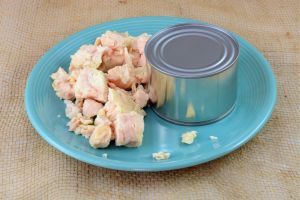 Shelf Life: 3 to 4 Years
Shelf Life: 3 to 4 Years
Calories Per Serving: 90 to 130
Canned chicken is another popular ready to eat food that you’ll need to stockpile before it vanishes from store shelves. While it too can be packed in oil, you most commonly see it packed in water.
If you have a choice, the one that’s best for you will depend on how you use it. If you want to simply open the can and eat it in the field on the go, chicken in water is the more palatable option. If you’re going to use it to cook, chicken in oil is more pan friendly. It also tends to smell less like cat food.
If you raise chickens or have a little extra cash to buy fresh meat, I highly recommend this canning method that I’ve been using to preserve chicken and beef. It lasts over a decade, tastes way better than store-bought canned chicken, and you get to control exactly what goes into it—unlike the store-bought versions that often contain preservatives and unhealthy additives.
Peanut Butter
 Shelf Life: 6 to 24 Months
Shelf Life: 6 to 24 Months
Calories Per Serving: 190 to 210 for 2 Tbs
Peanut butter is arguably the number one food to stockpile as it will disappear the fastest from store shelves when panic-buying starts.
It’s calorically dense, so you can keep a lot of food value in a relatively small space. Perfect for a bug-out bag or just to keep you fed on a multi-day hunting trip.
Peanut butter is also a good source of protein and healthy fats. However, it can be a little high in sodium. All-natural peanut butter has the best nutrient value and least unhealthy additives.
The tradeoff is that it only has a shelf life of around 6 months unopened. A jar of commercially processed peanut butter with additives and preservatives can have a shelf life of up to 2 years unopened.
Powdered Fruit Juice and Sports Drinks
 Shelf Life: 6 to 12 months
Shelf Life: 6 to 12 months
Calories Per Serving: 60 to 180
When it comes to instant foods for a stockpile powdered fruit juice and sports drinks might not sound all that filling. They might even sound like luxury items or things you’d include to appease the kids.
However, the over-arching value to powdered fruit juice and sports drinks is in their hydration capacity and the vitamins they bring. This includes quick digesting sugars like dextrose, which can help in times when you’re dealing with low blood sugar. This can come in handy in times when you need energy to do something like haul a field-dressed deer back to camp.
A lot of powdered fruit juices can also provide you with a quick dose of carotenoids, lutein, lycopene, folate, vitamin C, and vitamin E. All are key nutrients that might be hard to come by during a prolonged crisis.
For sustained energy and overall health, consider adding this Dual-Extracted Reishi Mushroom Tincture to your supplies. Unlike energy drinks that offer only a temporary boost, Reishi combats fatigue and helps maintain balanced blood sugar, preventing those energy crashes when you need to stay alert.
This powerful adaptogen not only aids the body in coping with stress but also promotes restorative sleep and boosts immune function—crucial in unpredictable situations.
In a survival scenario, where every ounce of energy counts, this tincture can help sustain your stamina and overall well-being, making it a smarter choice than conventional energy drinks.
Instant Powdered Milk
 Shelf Life: 3 to 10 years
Shelf Life: 3 to 10 years
Calories Per Serving: 55 to 80
Powdered milk is another staple instant food that needs to be featured in your stockpile. It’s the sort of thing everyone will think about and rush to in hopes of keeping some form of dairy in their diet.
It’s also the sort of additive that you can put in other low-calorie foods, and soups to give them more nutritional value.
The shelf life of instant powdered milk can vary. The fat content and the storage temperature will greatly shorten or increase the shelf life of powdered milk. Non-fat powdered milk that’s kept frozen might be good for two decades or more. Whereas whole powdered might only be good for 18 to 24 months.
The wise move here might be to put some nonfat powdered milk in cold storage and leave it there for safe keeping. Then every 18 months or so buy some whole powdered milk and rotate the old stock for use.
Rolled Oats
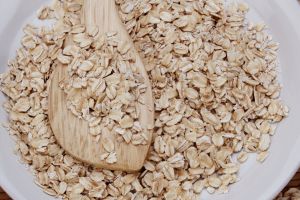 Shelf Life: Up to 24 months
Shelf Life: Up to 24 months
Calories Per Serving: 150 to 160
While they’re primarily meant to be used as a quick oatmeal breakfast cereal, rolled oats can be extremely versatile. This makes them appealing to rotate through your stocks for use every two years or so.
They can be used to make a wide range of baked goods, like pies, cookies, crumbles and crisps. You can even mix them into improvised granola and protein bars to add some bulk, along with much-needed dietary fiber.
You can also grind rolled oats into oat flour, which can be used as a thickener for stews and other dishes. Oat flour can even be used to make tortillas, which gives you another way to break the monotony of an instant food diet. I still have fond memories of rabbit and foraged ramp burritos in improvised oat tortillas, from a wilderness survival retreat in my 20s.
Instant Potatoes
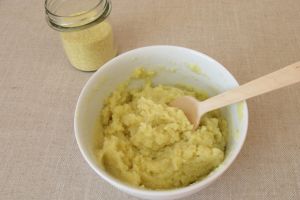 Shelf Life: Up to 3 years
Shelf Life: Up to 3 years
Calories Per Serving: 110 to 145
Instant mashed potatoes are one of the top priority instant foods to stockpile for a potential emergency. They can be rehydrated to a different consistency to add to their versatility.
Adding more moisture gives you a potato soup base. Less moisture, a little bit of flour and an egg and you can make potato dumplings like gnocchi. This can really help break up the monotony of bulk instant foods!
Instant mashed potatoes, while convenient, aren’t as nutritious as fresh potatoes. They lose some of their natural vitamins and minerals during processing, especially compared to the nutrient density of whole potatoes.
If you’re looking to preserve that nutrition while still getting long-term storage, learn here how to can potatoes for a 5+ year shelf life. This way, you can enjoy the benefits of real potatoes even during an extended crisis.
Tuna in Cans or Pouches
 Shelf Life: 3 to 4 years
Shelf Life: 3 to 4 years
Calories Per Serving: 70 to 120 or 230 to 280 (Varies by Type)
Of all the canned foods that will disappear first, tuna is the one most panic shoppers will reach for first. It’s what they know, and it’s high in protein as well as versatile.
However, there are a lot of different types to consider. The calories per serving and the quality of the tuna can vary wildly depending on the type of package and the medium inside.
Instant Grits & Instant Brown Rice
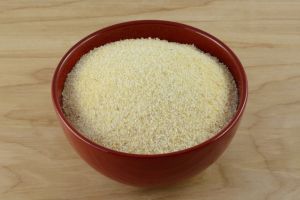 Shelf Life: Up 2 to 3 Years before opened
Shelf Life: Up 2 to 3 Years before opened
Calories Per Serving 120 to 230
Instant grits and instant brown rice are an important thing to keep in your stockpile to add belly-filling bulk and fiber to other foods.
They aren’t particularly packed with nutrients beyond some basic carbs, a little protein and some soluble fiber.
It’s their belly filling value that puts them in such high demand. You can mix them with a wide range of meats to make them more filling and stretch your protein source. You can use them to bulk up soups or as a base to stir in thin sauces.
When times were tough in the later days of the Great Depression and World War Two, my grandmother turned to rice to work her magic. She worked at a local restaurant and would bring home bones leftover after butchering primal cuts. Then she’d make a stew from the marrow and meat scraps, and cooked the rice in it until it soaked it up. It was one of the staple ways she kept 6 children fed.
As you consider the best instant foods to stockpile, remember that a comprehensive food reserve is crucial for long-term survival. This well-rounded guide offers insights on building a lasting stockpile that doesn’t rely on refrigeration, helping you prepare for any crisis.
It highlights affordable, nutrient-dense options and offers a meal-by-meal rationing system to help you maintain your strength and health during tough times.
With expert advice on everything from must-have canned goods to overlooked survival foods and practical storage tips, this guide is an essential resource for any prepper looking to enhance their emergency food supplies.
You may also like:
 Better Than Having a Water Stockpile
Better Than Having a Water Stockpile
Fast-Growing Vegetables You Should Grow in a Crisis (Video)
How Far Away Would You Need to Be to Survive a Nuclear Blast?
Survival Shelters Every Prepper Should Know
What Livestock My Grandparents Raised During the Great Depression
Read the full article here
